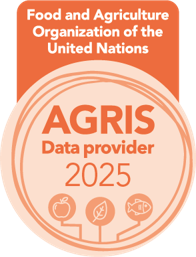Impacts of sediment mining on the hydrochemistry and macrozoobenthos community in a coastal lagoon, Lagos, Nigeria
Abstract
The water chemistry and macrozoobenthos assemblage of ten study stations in the Lagos lagoon were studied from December 2016 to May 2017 to assess the impacts of sediment mining on the water quality and the biological indices of the macrozoobenthos. Water and composite benthic samples were collected monthly at each study station and analysed in the laboratory following standard procedures. Except temperature, pH, TSS, salinity and conductivity showed no significant (P>0.05) difference, while the other parameters were not significantly (P<0.05) different among the stations. The sediment grain size analysis of the study area indicated the dominance of sand in sediment. This could be as a result of the dredging of the study area as Lagos lagoon is originally known to have muddy substratum. A total of 1,237 organisms belonging to 3 phyla, 4 classes, 10 families and 10 Species were recorded during the study period. Analysis of benthic community structure of the study area reveals a community dominated by mollusks, with the Bivalve, Aloides trigona contributing 54% and the gastropod, Pachymelania aurita contributing 33% of the total benthic fauna assemblage during the period of study. The fluctuations in the physicochemical parameters, sediments, and the composition, abundance and diversity of the macrobenthic fauna of the study area were largely influenced by the anthropogenic activities. In particular, stations with pronounced sediment mining activities recorded highly turbid water, changed substratum type and defaunisation.
Keywords:
Coastal lagoon, Hydrochemistry, Macrozoobenthos, Sediment miningDownloads
Published
How to Cite
Issue
Section
Copyright (c) 2020 Agriculture and Environmental Science Academy

This work is licensed under a Creative Commons Attribution-NonCommercial 4.0 International License.

